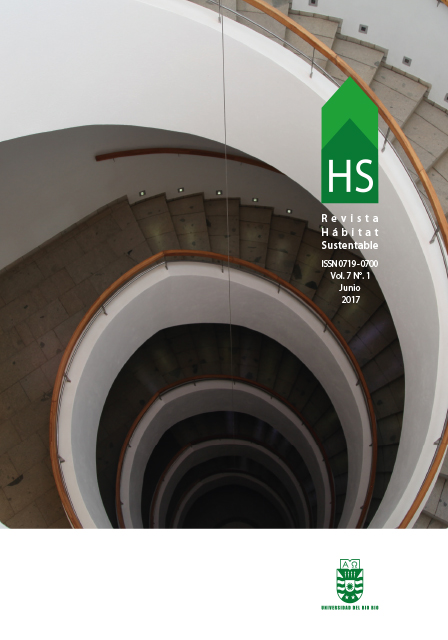The vegetation as a control system for the urban heat Islands in ciudad Juárez, Chihuahua
Keywords:
green areas, urban heat island, urban microclimateAbstract
Globally the territory has undergone a process of urbanization, which has modi ed the physical and climatological conditions as a consequence of the densi cation and construction of the urban areas, above all with the use of materials that retain the heat and that favor the phenomenon of Urban heat island (ICU), a term established by Gordon Manley in 1958 (Fernandez, 1996). This work evaluates the impact of green areas to act as a heat island control system over Ciudad Juárez, Chihuahua, during the summer of 2016. The methodology consisted of analyzing four green areas to determine the temperature difference between Wooded areas and non-wooded areas, recording temperatures with Hobo® sensors every 15 minutes. The results obtained showed that there is a temperature difference of 3.82 ° C between the wooded and non-wooded areas in the green area with the highest vegetation level, while the green area with the lowest vegetation level found a difference of 0, 53 ° C. However, the impact they will have on the urban area will be based on the con guration and characteristics of the same green area.
Downloads
References
Ángel, L. (2010). Islas de calor y cambios espacio-temporales de la temperatura en la ciudad de Bogotá. Ciencias de la Tierra, 173-183.
Akbari, H., Cartalis, C., Kolokotsa, D., Muscio, A., Pisello, A. L., y Rossi, F. (2016). Local climate change and urban heat island mitigation techniques. The estate of the art. Journal of Civil Engineering and Managment.
CONAGUA. (2015). Actualización de la disponibilidad media anal de agua en el acuífero Valle de Juárez . México, D.F: Comisión Nacional del Agua.
CONAGUA. (2016). Comisión Nacional del Agua. Servicio Meteorológico Nacional. Obtenido de Normales Climatológicas por Estación: www.smn.cna.gob.mx
IMIP. (2016). Plan de Desarrollo Urbano Sostenible. Instituto Municipal de Investigación y Planeación .
JMAS. (Agosto de 2016). Junta Municipal de Agua y Saneamiento Juárez. Obtenido de http://www.jmasjuarez.com/fuentes.php
Kurbán, A., y Cúnsulo, M. (2015). Estudio del efecto térmico de espacios verdes urbanos del árido con sensores urbanos. Hábitat Sustentable, 42-55.
Ochoa de la Torre, J. M. (1999). La vegetación como instrumento para el control microclimático. Barcelona: Universidad Politécnica de Catalunya.
Puliafito, S., Bochaca, F., y Allende, D. (2013). Mitigación de la isla de calor urbana en ciudades de zonas áridas. Proyecciones, 29-45.
Sandoval, J. L. (2014). Efects del crecimiento urbano sobre el sistema ambiental en la región Paso del Norte . Ciudad Juárez: Universidad Autónoma de Ciudad Juárez .
Wong, N. H., y Yu, C. (2005). Study of green areas and urban heat island in a tropical city. Habitat Internacional, 547-558.
Downloads
Published
How to Cite
Issue
Section
License
The content of articles which are published in each edition of Habitat Sustentable, is the exclusive responsibility of the author(s) and does not necessarily represent the thinking or compromise the opinion of University of the Bio-Bio.
The author(s) conserve their copyright and guarantee to the journal, the right of first publication of their work. This will simultaneously be subject to the Creative Commons Recognition License CC BY-SA, which allows others to share-copy, transform or create new materials from this work for non-commercial purposes, as long as they recognize authorship and the first publication in this journal, and its new creations are under a license with the same terms.











 Scientific Information Program/Concurso Fondos de Publicación de Revistas Científicas 2018/ Proyecto Mejoramiento de Visibilidad de Revistas UBB (Código:FP180007).
Scientific Information Program/Concurso Fondos de Publicación de Revistas Científicas 2018/ Proyecto Mejoramiento de Visibilidad de Revistas UBB (Código:FP180007).





